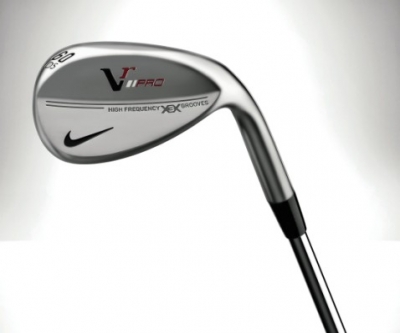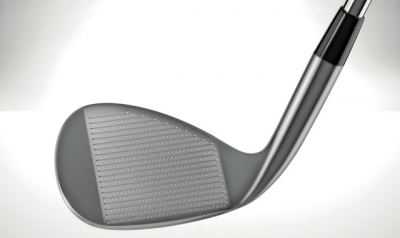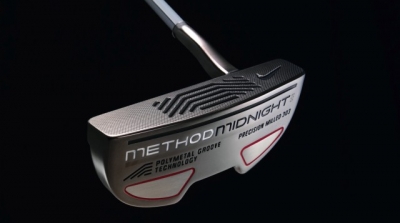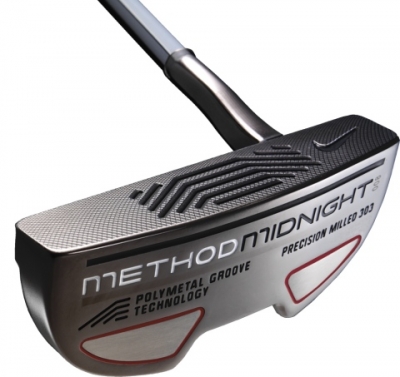By Scot Rendall; images courtesy of Nike Golf
BEAVERTON, OR -- In the evolution of golf over the last 25 years, it would be tough to argue that the golf industry has spent a lot of energy creating and marketing wedge products to pull customers into pro shops. That is, until now. The USGA’s recently implemented rule changes on wedge grooves have sent many golf equipment manufacturers back into the research and development laboratory to produce wedge clubs that still drive performance and results for shot-makers in the 100 yards-and-in portion of every golf hole.
Such is the case at Nike Golf, where their club development team has created the VR Pro wedge line to help golfers achieve solid outcomes in the aspect of golf that perhaps has more impact on scoring than any other.
According to Nike, “the VR Pro wedges are developed out of a precise forging process, resulting in a wedge that offers accurate shot-shaping performance”. The design of the club face features innovative X3X high-frequency grooves. High frequency means more of them – but just how many more? The 58 degree VR Pro wedge that I tested has 21 grooves, 31% more than a traditional wedge design (my previous wedge had 16). With the grooves closer together, shot makers realize more control and consistency across all of the various lies encountered on short approach shots.
The other trend-setting feature incorporated by the Nike research team is a precision laser crosshatch pattern that is applied to the clubface area between the grooves. Nike states that “this pattern adds three times the surface texture versus conventionally finished faces, creating more spin in all conditions”. Produced with a precise forging process, the VR Pro wedge has been crafted to eliminate variance and enhance control.
 |
So why are consistency and control important? In a conversation with the Nike team, they are proud of the fact that they have the best wedge sole grinds in the industry, which have been Tour proven with multiple major victories. Dealing with tight pin placements on a daily basis makes the game professionals play literally a game of inches. Clearly, this technology delivers for pros that make a living off of precision and small margins.
One other excellent example of Nike precision is the number of loft and bounce options offered in the VR Pro line – there are 10 different combinations to choose from! This allows all players to fill out their bags with clubs that will cover virtually any short approach distance and lie situation.
With my iron set gap wedge at 49 degrees, I elected to test drive a 54/12 VR Pro gap wedge in addition to the 58/10. This duo allows me to cover all distances and lie qualities around the green. During a recent golf trip to Palm Desert California, I was able to give these clubs a workout.
The results? The control and precision enabled by the clubs enabled a more aggressive approach to tight pin placements. In my 35 years of playing golf, I have never been able to back up a ball on the green until I played a few shots with the VR Pro wedge. The spin generated by the clubface flat out stops balls, allowing for more confidence in playing to the right green tier or strategizing about the best portion of the putting surface to play from.
In shots from the rough, I found the clubs gripping the ball better, launching the ball slightly higher for a softer landing. In the bunkers, having the two different loft options allowed for more precision (there’s that word again!) in club selection depending on consistency of the sand and length from the pin.
 |
More precision. More confidence. The technology works for me, and shaving 2-3 strokes per round as a result of more assertive wedge shots makes the game more enjoyable.
In a nutshell, the Nike club development team has succeeded in producing a wedge line fully compliant with the new USGA and R&A rules governing golf club grooves while delivering amazing performance for weekend golfers and tour pros alike.
Their work has produced an unprecedented understanding of the science around ball impact, ball friction, debris channeling, and spin launch. The VR Pro wedge benefits from this research and technology and in effect becomes a must-have club in the bag.
Nike Golf Midnight Method Putter
The research team at Nike has also taken innovative groove technology into its Method Midnight putter line. Let me see if I can understand this: grooves…in putters? Yes! According to Nike, “the revolutionary and visibly distinctive polymetal groove technology generates a forward roll almost immediately after impact for the kind of accuracy and consistency that is demanded by Tour professionals”.
 |
Have polymetal grooves made a difference in the winner’s circle? If 34 wins by Nike athletes on professional tours worldwide are an indicator, the answer is a resounding yes.
The Nike club development team has found that most traditional steel-faced putters create a small amount of backspin on contact, which causes a slight bounce and thus a greater likelihood of minor variations in intended ball path. In the discipline of putting, millimeters matter! So a clean start to the putt roll can directly translate into more confidence and fewer putts per round.
Polymetal means the putter head is constructed with a combination of aluminum and polymer. For me, this created the softest feeling contact that I have ever experienced in a putter. In a discussion with Nike factory reps, they believe the Midnight Method technology and performance benefit from the polymetal grooves and their intimate understanding of the relationship between a player’s stroke and center of gravity. This has given the typical golfer their best opportunity to make more putts without doing anything physically different.
Most experienced golfers understand that there is a large degree of subjectivity when it comes to putter details – shapes, sizes, and colors will vary by individual preferences. In my usage of the Method Midnight 006 model (offset clubhead), I came to appreciate the dark chrome color – no blinding white paint, and no reflective glare made by some natural finished, steel-headed clubs.
From a performance standpoint, I noticed the most difference in short putts, those of eight feet or less. The tungsten heel-toe weighting reduces the possibility of head twisting, and the forward roll from the polymetal grooves produces a laser-like, directed ball path. It was subtle, but detectable, and in putting, it’s the subtleties that will produce results.
 |
I didn’t notice as much difference on longer putts, but I think over time, the benefit of the forward roll there would kick in as well as I get used to the feel of the putter and synch it with my stroke. The Nike rep said that because longer putts are hit with more velocity, even more backspin is created with traditional putter heads, which will make it more likely that a putt can be thrown off of its intended line.
Nike may be on to something with their groove-in-putter development. I would encourage golfers interested in a fresh putting approach in 2013 to try it out. Visit your local pro shop and give all three head versions a try and select the one that sights best for you.
Details:
| Related Links | Comments on this article? | |
|
Maryland National Golf Club Hollow Creek Golf Club Rocky Gap Resort PB Dye Golf Club in Ijamsville Whiskey Creek Golf Club |
E-mail Jeff Rendall, Editor: jrendall@golftheunitedstates.com |











